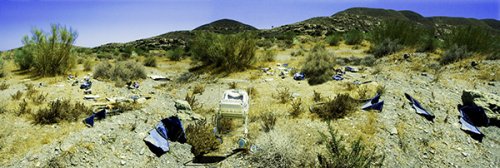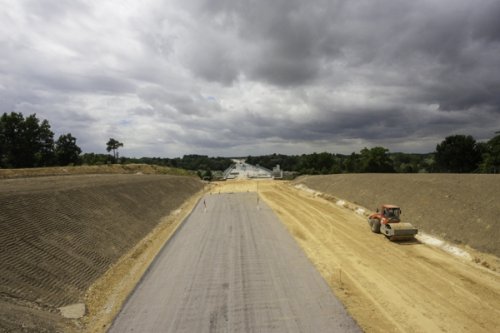Carbon is not the problem
Published on July 25, 2015
by George King
Managing Director at The Whitney Pastoral Company Pty Ltd, « Coombing Park » I recently had the privilege of flying Walter Jehne from the southern temperate zone of New South Wales, through the deserts of Central Australia to the subtropics of the Northern Territory. About 20 hours of return flight time looking at and talking about Australia’s environments. Walter is a soil microbiologist and probably the most intelligent and knowledgeable person I have ever met. He is immensely patriotic to Australia and has the clearest understanding of environments.
Here is the layman’s version of some of what I learnt. Carbon is not the problem, it is certainly a major symptom of the problem though. Even if we cut our carbon emissions to zero right now it will take hundreds of years for the carbon levels to fall to pre-industrial revolution levels. And no developed country is going to cut their standard of living so drastically.
The root problem is that on a local level we have adversely affected the hydrological cycles of the environment. The world population and distribution is at such a saturation now that human local land management is catastrophically effecting the global environment. The good news is that we have the ability to reverse any damage we have done to the hydrological processes, it is simple, it is affordable and we will produce more food in the process.
For the past 420 million years soils have been the foundation for the evolution of life on land, it stands to reason that the soils will hold the solution to turn around our current practice from damaging soils globally to growing them again as nature has been doing for millennia. Almost without exception every nation’s greatest export by volume and value is eroding soil.
Our soils are formed and are governed by the microbial processes which regulate much of the Earth’s critical carbon, water, nutrient, heat dynamics, cooling and climate cycles and more importantly their interconnected balance. The natural hydrological processes govern 95% of the heat dynamics and balance of the blue planet. We have been damaging these hydrological processes for more than 10,000 years but particularly in the past 300 years.
Naturally over 90% of the incident solar energy entering the troposphere is safely transmitted back out to space via a range of hydrological processes. This has created and regulated the Earth’s temperature, rainfall and climate for billions of years allowing life to evolve. The damage we have done to the environment is manifested as damage to the terrestrial hydrological cycles, and this damage is exacerbating the environmental damage in a destructive feedback loop. Every additional gram of carbon in the soil allows the soil to hold an additional eight grams of water. We have oxidised vast quantities of carbon from our soils globally which means the soil holds less water, grows less green matter and attracts less rain.
There are several factors which cause rain. Australia has rivers of moisture floating overhead which does not convert to rain – approximately 10 times more moisture flows over our nation than falls on it. Most of our moisture waits until it gets over the oceans where it is cool enough for the microhaze to coalesce into large enough droplets to nucleate as water and fall from the sky. Microbial nuclei released from green vegetation causes microhaze to coalesce into rain. If the microbial nuclei, salt nuclei and ice precipitation nuclei are not present it is a lot greater push for the microhaze droplets to cool and coalesce into raindrops, when this happens the result is heavy storms and erratic weather patterns.
The world was naturally 50% covered by dense cloud which reflected 33% of the incident solar radiation back into space, systematically cooling the atmosphere. The world is now carrying a large humid haze which cannot easily coalesce into dense clouds. Normally the humid haze should coalesce into clouds, rain, and then reopen the windows to re-radiate heat back out into space during the night. Currently these windows are blocked by the water hazes which are responsible for some 60% of the observed greenhouse night time temperature increases.
Science has understood the capacity of these hydrological processes which govern and cool the blue planet but they were assumed too big to be influenced by humanity. Instead research focused on CO2 levels and its minor greenhouse effects as both the cause of and the focus for a solution. The world has spent 30 years and $60 billion on these assumptions to no real benefit.
The inescapable reality is humanity has massively impacted the hydrological processes of 10 billion hectares or 60% of the earth’s land surface by denuding plant and tree growth. We can reverse this by naturally regenerating plant & tree matter to restore our soils and biosystems, using the soils as a massive carbon sponge to hold more water, to grow more grass and to feed more people while we are stabilising the world environment. Being involved with this repair makes me proud to be a farmer.
George King
“Coombing Park”
CARCOAR NSW AUSTRALIA
 Regard sur l’image
Regard sur l’image

